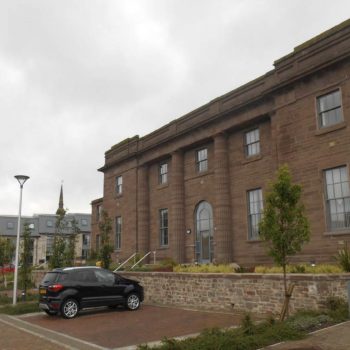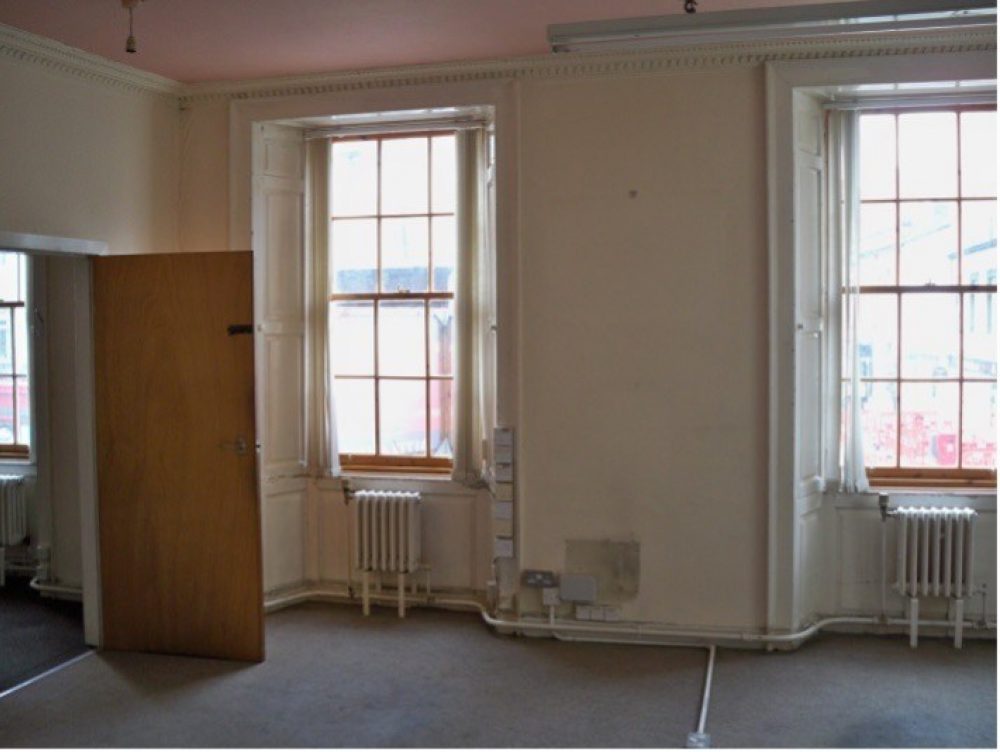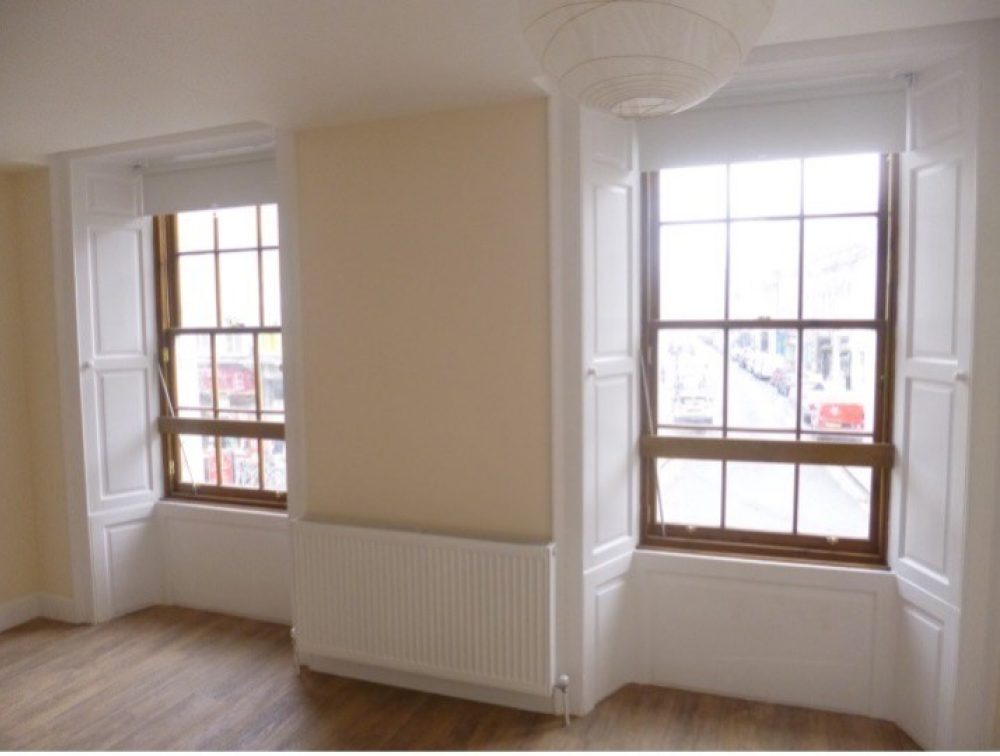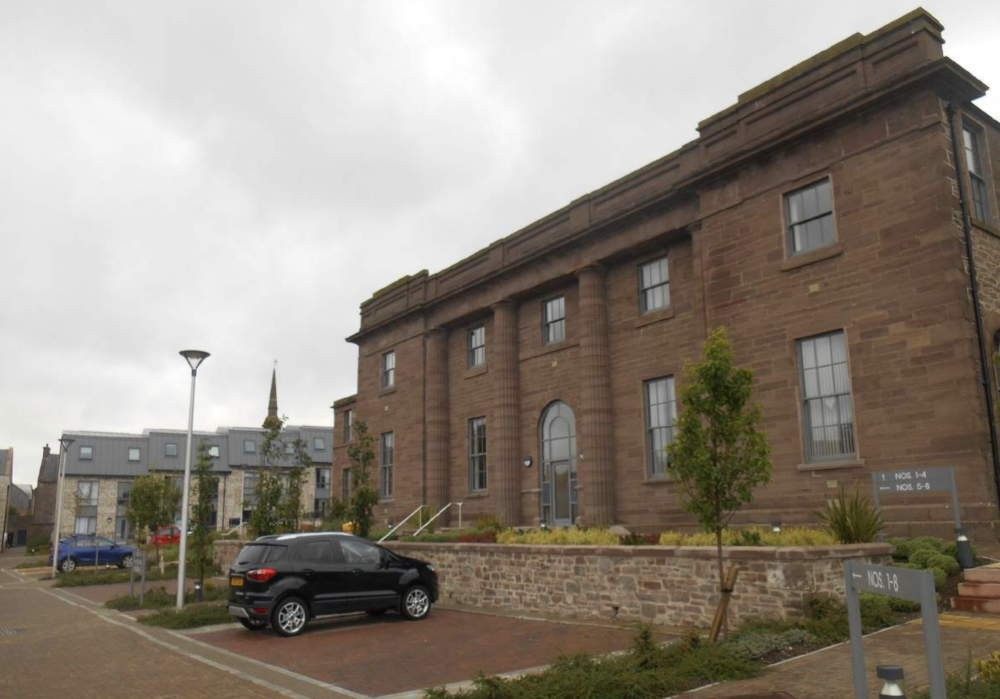Town centre living
More and more good examples of developing new homes in town centres have emerged in recent years, particularly the conversion of underused upper floors or vacant older buildings for much-needed homes.
The examples below are a selection of good examples from across the country where local authorities and housing associations have taken the initiative, often with support from national organisations, to repopulate town centres and save historic buildings. Conversion of older buildings can cost more than new build, but the extra benefits relating to heritage, community pride and sustainability mean that there is often additional support available (see resources section at the bottom of this page).

Fill empty property: Perth
Perth and Kinross Council recognises the damaging effect that disused shops and offices and long-term empty homes can have on local communities and economies, and is also keen to increase the supply of local housing for local people. To tackle these issues, the council has an empty homes programme managed by a small team combining housing and planning staff, subsidised by the council’s empty homes council tax, which runs a number of schemes to get empty property back into use.
The council team provides a combination of proactive support and grants. In Perth, their focus is on larger properties which will have most impact in terms of housing need and town centre regeneration. As professional firms have moved out of the city centre, more and more upper floors are vacant – yet there is always demand for flats. The costs of conversion are increasingly expensive as standards increase, but the alternative is town centre buildings in poor repair and unsatisfied demand for flats.
To tackle this, the team contacts landlords of vacant High Street properties (who, in Perth, are often institutional investors like pension funds) to encourage them to let their upper floors. The team knows there is demand for affordable town centre flats, so their question for landlords is: how can we help you meet that demand? This has led to re-letting of vacant flats and also sales to local developers who are more likely to progress schemes.



The Watergate project on Perth High Street is a good example. It brought a prominent vacant B-listed building (previously used as offices but vacant for several years) back into use as two affordable flats for rent. Council funding worked out as £9,200 for each two-bedroomed flat – very cost-effective compared to approximately £100,000 to build new affordable accommodation of the same size. Council staff worked proactively by contacting the letting agent to offer grant support and advice on accessing VAT discounts, and guiding the owner through the relevant consents processes.
The council’s grants are relatively small-scale and are designed to operate as incentives for landlords:
- Empty Homes Initiative offers grant support of up to £7,500 per bedroom for long term empty properties.
- Empty Homes Loan Fund previously offered interest free loans of up to £20,000.
- Vacant Property Feasibility Funding offers up to £5,000 towards professional fees for feasibility studies on bringing an empty property back into use.
The team also offers an Empty Property Matchmaker Scheme, a free service which helps prospective buyers and sellers of empty properties find each other more easily. They also co-ordinate other partners, directing landlords towards support like Perth City Heritage Trust’s City Heritage Grants and the Scottish Empty Homes Partnership run by Shelter Scotland.
Reuse old buildings for affordable homes: Chapelpark, Forfar
When the former Chapelpark primary school closed its doors in Forfar town centre after nearly 200 years, Angus Council was left with a valued historic B-listed building on its books – and, unfortunately, little market interest in taking it on, not helped by the complexity and cost of conversion. But the council felt a sense of responsibility to the community to save such a prominent and valued local asset. With high local demand for affordable homes, they decided to convert the school buildings into social rented housing, at a cost of £2.6m funded by the local authority (approximately 70%) and the Scottish Government.
The two year project was managed by the council and completed in 2018. With some demolition of more recent additions to the original school building and new build in the grounds, the site is now occupied by 29 high quality affordable homes: 18 one-bedroom flats, 6 two-bedroom flats, 1 three-bedroom flat and 4 five-bedroom townhouses. The homes were prioritised for existing social housing tenants who scored highly, and future tenants were allocated their homes early in the design process so that they could be closely involved with the design of their new home.

Many challenges were encountered during the project – such as crumbling walls and tall windows – which gave rise to unexpected hidden costs and delays, as is so often the case with conversion of historic buildings. This meant that managing the expectations of the future tenants was important.
As befits such a prominent town centre building, a public open day was held when the project was completed to enable new tenants, former pupils and the public to see the transformation.
The Council has undertaken other similar projects on listed buildings at risk, such as the award-winning conversion of Glengate Hall in Kirriemuir town centre into 9 affordable flats (winner of the SURF Town Centre Regeneration Award 2014). The Chapelpark project won the SURF Housing Award in 2018.
For any queries about the project, please contact Andrea Wilson, Manager - Housing Assets, Angus Council: phone 01307 492618 or email wilsonaf@angus.gov.uk.
Reuse old buildings for affordable homes: Carnegie Library, Coatbridge
The former Carnegie Library in the centre of Coatbridge was built in 1905 – an excellent example of the Beaux Arts architecture, and a much loved B-listed building used by generations of local residents. The building was really important to the town, historically and culturally. So when the library was relocated to a new building in 2010, the Council worked with Clyde Valley Housing Association to redevelop it for twelve affordable homes.
Funding for the £2.5m project was provided by Scottish Government, Historic Environment Scotland, the council and the housing association. From the outset, the objectives combined historic conservation, town centre regeneration and much-needed affordable housing.
The project won a Scottish Award for Quality in Planning in 2018. The judges commented: “From the starting point of a derelict building - the transformation of the library into new, affordable, homes as well as its revived impact on the surrounding place - was self-evident to the judges. The project illustrated a careful but bold preservation, of a once cherished public building, into a modern, clean and attractive place to live. The new homes were also complimented by a simple but elegant landscaped garden. Plus, the project is in line with the [Scottish] Government’s Town Centre First Principle by encouraging, and providing the opportunities, for people to live back in town centres.”
Resources for town centre living
Architecture and Design Scotland provides guidance on building communities in town centres through intergenerational housing: see "A Caring Place" report, case studies and blog.
Built Environment Forum Scotland: range of case studies, fundraising toolkit, briefings, advocacy toolkit and other useful information particularly related to the historic environment.
Historic Environment Scotland has various sources of grant funding and advice to support the re-use or enhancement of vacant and historic buildings in town centres.
Scotland's Land Information Services is an easy-to-use Scottish Government website which enables you to find property owners, check if a property is on the land register, search for property prices and buy property documents.
Scottish Empty Homes Partnership is hosted by Shelter Scotland and funded by the Scottish Government. It runs an Empty Homes Advice Service, and encourage Scotland’s approximately 40,000 privately-owned empty homes back into use.
Scottish Futures Trust is working to support public sector initatives for new homes for rent.
Under One Roof: an online resource full of useful information about maintenance and management of tenements, flats and other common property (old and new) for owners, tenants and advisers.